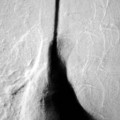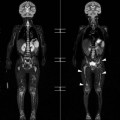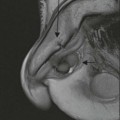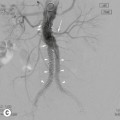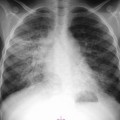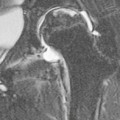Aoife N. Keeling, Bhaskar Ganai, Michael J. Lee Biliary intervention is not as prevalent as it was 20 years ago because of the advent of endoscopic retrograde cholangiopancreatography (ERCP). Skilled endoscopists can treat the vast majority of patients with biliary obstruction with stents, stone removal and/or sphincterotomy. In addition, the days of perfoming a diagnostic percutaneous transhepatic cholangiogram (PTC) are virtually over with the advent of magnetic resonance cholangiopancreatography (MRCP). PTC is now almost always performed before a therapeutic biliary drainage. Percutaneous biliary drainage remains an important technique for managing patients with biliary obstruction where ERCP fails or is not possible. Interventional radiology (IR) also plays a significant role in treating patients with benign biliary strictures and, particularly, patients with anastomotic strictures after hepatico-jejunostomy. Careful patient preparation is essential before any biliary procedure to avoid potentially serious complications. All patients with obstructive jaundice should be commenced on intravenous fluids during and after biliary drainage. Patients with obstructive jaundice have usually fasted for a myriad of other tests before reaching IR and are often significantly dehydrated. Any significant choleresis after biliary drainage can place patients with long-standing obstructive jaundice and high serum bilirubin levels at risk of developing hepatorenal syndrome. Coagulation screening and a serum creatinine check should be performed before all biliary drainage procedures. Correction of any bleeding diathesis should be performed before any drainage. In addition, all patients should receive broad-spectrum antibiotic coverage within one hour of the drainage procedure, or indeed any further biliary procedure, including tube change or cholangiography, to protect against biliary sepsis. The authors prefer monotherapy with piperacillin/tazobactam which has broad Gram-negative and -positive coverage and achieves high concentrations in bile. Patient preparation also includes reviewing all imaging studies, including computed tomography (CT), ultrasound (US) and magnetic resonance (MR) cholangiography, so that a full picture of the biliary procedure can be discussed with the patient during the consent process. Biliary obstruction can arise from both benign and malignant causes. Malignant causes are more common and include obstruction from pancreatic carcinoma, cholangiocarcinoma and metastatic disease. Ultrasound is the imaging modality of choice for determining the presence or absence of dilated bile ducts. Further investigation with CT or MRI/MRCP is used to determine the cause and level of biliary obstruction, and in cases of malignancy, for staging and assessment of surgical resectability. Most malignant tumours causing biliary obstruction are not surgically resectable at the time of diagnosis and these patients have a limited life expectancy. Malignancy should be confirmed with biopsy if possible. Cross-sectional imaging will also determine the level of biliary obstruction and any atrophy/compensatory hypertrophy in a liver lobe, which can impact the proposed biliary draiange. Mid to lower biliary obstruction is now increasingly treated endoscopically in the first instance; lesions at the liver hilum are challenging to treat at ERCP and are best dealt with by percutaneous biliary drainage. The goal of treatment is to relieve jaundice, treat or prevent sepsis and improve symptoms of pruritus.1 Percutaneous transhepatic cholangiography is the first step in a range of biliary interventional procedures. This is usually performed under conscious sedation or general anaesthesia. Hilar lesions may cause atrophy or compensatory hypertrophy of a liver lobe which affects the decision on whether drainage of that lobe is indicated. MRCP is important in establishing the level of the hilar obstruction and the extent of involvement of the intrahepatic ducts. For example, if the anterior and posterior sectoral ducts on the right are both involved, it may be best to drain the left lobe only (if the size of the left lobe is sufficient to provide palliation of jaundice). Puncture of the ducts in the right lobe access can be performed under either fluoroscopic or ultrasound guidance, whilst left lobe punctures are usually performed under US guidance. A coaxial introducer system employing a 21G Chiba needle and 0.018-inch guidewire which enables upsizing to a 0.035-inch guidewire reduces the risk of haemorrhage. If fluoroscopic guidance is used on the right side, the point of entry is the mid axillary line just above the tenth rib. A peripheral duct should be selected and, after aspiration of bile, a diagnostic cholangiogram is performed with iodinated contrast material. After cholangiography, the guidewire is passed into the central ducts to maintain access for further interventions. In most cases an external drain (tube is left above the level of obstruction) is a temporary measure and an internal–external biliary drain from the duodenum through the biliary system to the skin surface is preferred. In patients with biliary sepsis, the goal of treatment is rapid decompression and drainage with minimal catheter manipulation and contrast material injection. In cases where a stricture cannot be crossed in the first sitting an external drainage catheter can be placed. The stricture can be negotiated during a subsequent session. An internal–external drainage catheter will have side holes both above and below the stricture and pass into the duodenum. It can be used after biliary stenting to preserve access to the biliary tree for a few days (a safety catheter) if the procedure has been difficult or there is blood in the biliary system limiting bile drainage and is usually followed by placement of a stent in patients with malignant obstruction. Two main types of biliary stents are available: plastic or metallic. Plastic stents (e.g. Cotton-Leung stents; Cook Medical, Bloomington, IN) offer lower patency rates due to encrustation of bile and often require a larger tract through the liver (10–12Fr), causing increased patient discomfort during insertion. They have the advantage that they are easily removed at endoscopy/surgery and can therefore be used preoperatively in patients who require drainage (e.g. for sepsis) before surgical resections. Metallic stents offer better patency rates than their plastic counterparts.2 These stents are inserted in a contracted state but when released, expand to a predefined diameter. This enables their placement though a smaller-calibre percutaneous tract (6–8Fr). Metallic stents elicit a marked fibrotic reaction; for this reason they should be avoided preoperatively and in benign disease. The larger-diameter lumen reduces the rate of occlusion from bile encrustation. Metallic stents occlude from either tumour growth through the interstices of the stent or, more frequently in hilar tumours, overgrowth at the ends of the stent. In lower common bile duct (CBD) strictures, stenting through the sphincter of Oddi may help provide better drainage with the theoretical risk of increased infection due to reflux of enteric contents. Covered stents have been developed for the biliary system. These metallic stent grafts have a fabric covering which aims to prevent tumour ingrowth, but have the drawbacks of increased migration and coverage of side branches leading to cholecystitis or pancreatitis with cystic duct and pancreatic duct occlusions, respectively. Despite these drawbacks, early data are promising in both malignant3 and benign4 disease. When stenting, the goal of treatment is to try and drain the largest volume of tumour-free liver. Careful review of pre-procedure imaging is mandatory to allow planning of the PTC approach for stent placement and the superior extent of obstruction. In a hilar obstruction, if both hepatic lobes require drainage then either a ‘T’ stenting configuration from a single percutaneous access site or a ‘Y’ configuration from bilateral access sites may be employed (Fig. 89-1). When the stent(s) have been placed, balloon dilatation can be performed to bring the stents up to nominal diameter (usually 8 mm in hepatic ducts, 10 mm in CBD), usually after administration of a further dose of analgesia as the dilatation can be very painful (Fig. 89-2). Benign strictures are often the result of iatrogenic ductal injury during laparoscopic cholecystectomy. Further causes include post-hepatic transplantation ischaemia, biliary atresia, choledochal cysts and sclerosing cholangitis. Transhepatic drainage can be performed in benign strictures or stones to: PTC is performed as described above and a balloon dilatation is performed with an 8- to 10-mm balloon. Following balloon dilatation, at least 2 weeks of biliary drainage with the catheter crossing the stricture is required. In cases of biliary-enteric anastomoses, the ERCP approach is less likely to be successful due to the formation of a Roux loop or Billroth II gastric anastomosis. Some surgeons advocate burying either the afferent or efferent Roux-en-Y loop during the biliary enteric anastomosis under the skin. The position of this loop is marked with surgical clips, enabling subsequent percutanous fluoroscopically guided access for stricture dilatation and stone extraction. This allows safe, well-tolerated access over many years.5 In patients with post-laparoscopic cholecystectomy bile duct injury or stricture, the goal is to cross the stricture or bile duct interruption and place a stent or stents to allow healing around the stent. It may be necessary to approach bile duct interruptions from both above and below so that a guidwire placed from one end can be snared in ‘open space’ from the other end to obtain through-and-through access. Benign strictures should be dilated to approximately 10 mm. It is useful to leave a 4Fr access catheter in place for approximately 6 weeks, in order to facilitate redilatation if early recurrence occurs. If there is no significant restenosis, the catheter should be removed. Percutaneous stents are not commonly used in benign strictures, as they will almost always become occluded after a few months. Biliary obstruction secondary to distal CBD calculi is usually initially managed endoscopically. In cases where ERCP is unsuccessful or the calculi are intrahepatic, a percutaneous approach can be employed. A PTC is performed as described above and a guidewire manipulated past the calculus into the duodenum. A balloon catheter is placed over the guidewire and passed beyond the calculi and the sphincter of Oddi is dilated. The balloon is then deflated and placed above the calculus. The balloon is reinflated and then pushed forward to move the calculi into the duodenum.6 Post-cholecystectomy retained bile duct stones are usually removed endoscopically. If a T-tube has been placed at surgery, percutaneous removal can be performed. The T-tube tract is allowed to mature for 6 weeks and the T-tube is removed over a guidewire. A second safety guidewire is placed to maintain access and the calculi is then removed with a basket. Percutaneous biliary drainage is relatively safe.7 Procedure-related mortality is around 2% with 30-day patient mortality >10% in many series due to the underlying advanced malignant disease and co-morbid conditions. Complications include localised pain, bile leak, bleeding including haemobilia and septicaemia. If the pleura is transgressed, there are additional risks or pneumothorax and haemothorax. External and internal–external drainage catheters can kink, become dislodged and exacerbate bilovenous fistulae.8 Metallic stents can become blocked and 10–30% will require reintervention. Track embolisation at the end of the procedure can also help to reduce the latter complications and reduce post-procedure pain. Track embolisation can be performed with pledgets of Gelfoam pushed into the peel-away sheath and left in the hepatic track as the peel-away sheath is withdrawn (Fig. 89-3). Alternatively, a 1 : 1 mixture of lipiodol : cyanoacrylate can be delivered with a dilator into the transhepatic track (Fig. 89-4).
Hepatobiliary Intervention
Introduction
Management of Biliary Obstruction
Background
Percutaneous Transhepatic Cholangiography
Biliary Drainage: External, Internal–External
Biliary Stenting: Metal, Plastic
Benign Disease
Benign Strictures
Calculous Disease
Percutaneous Biliary Intervention Complications
Vascular Interventional Techniques in the Liver
Chemoembolisation
Background
Malignant tumours receive almost all their blood supply from the hepatic artery, whereas the normal liver parencyma receives blood from both the portal vein and the hepatic artery. Transarterial chemoembolisation (TACE) aims to induce tumour ischaemic necrosis by occluding the blood supply to the tumour while preserving the blood flow to the normal liver parenchyma. Both hepatocellular carcinoma (HCC) and metastases may respond to TACE. Local delivery of chemotherapy directly into the tumour bed reduces systemic chemotherapy side effects.9
Indications
Patients with HCC with preserved liver function and Eastern Cooperative Oncology Group (ECOG)10 performance status of 0–1 without extrahepatic disease are most suitable for chemoembolisation.11,12 If the aim is to prolong life, patients with metastases should be treated if the disease is confined to the liver or if there is stable extrahepatic disease. In patients with neuroendocrine tumours, TACE can control symptoms such as flushing, sweating and palpitations.
Stay updated, free articles. Join our Telegram channel

Full access? Get Clinical Tree

















